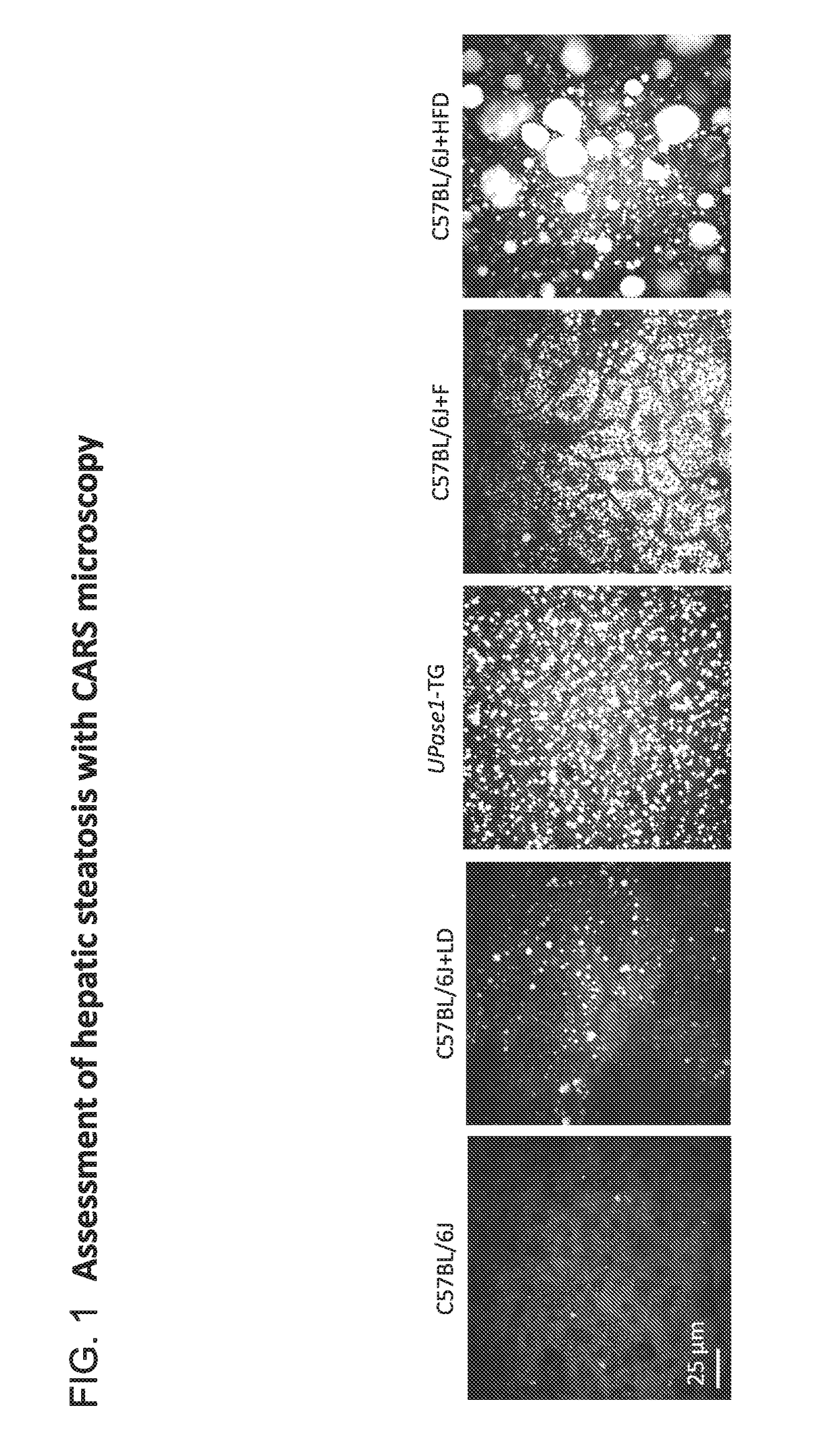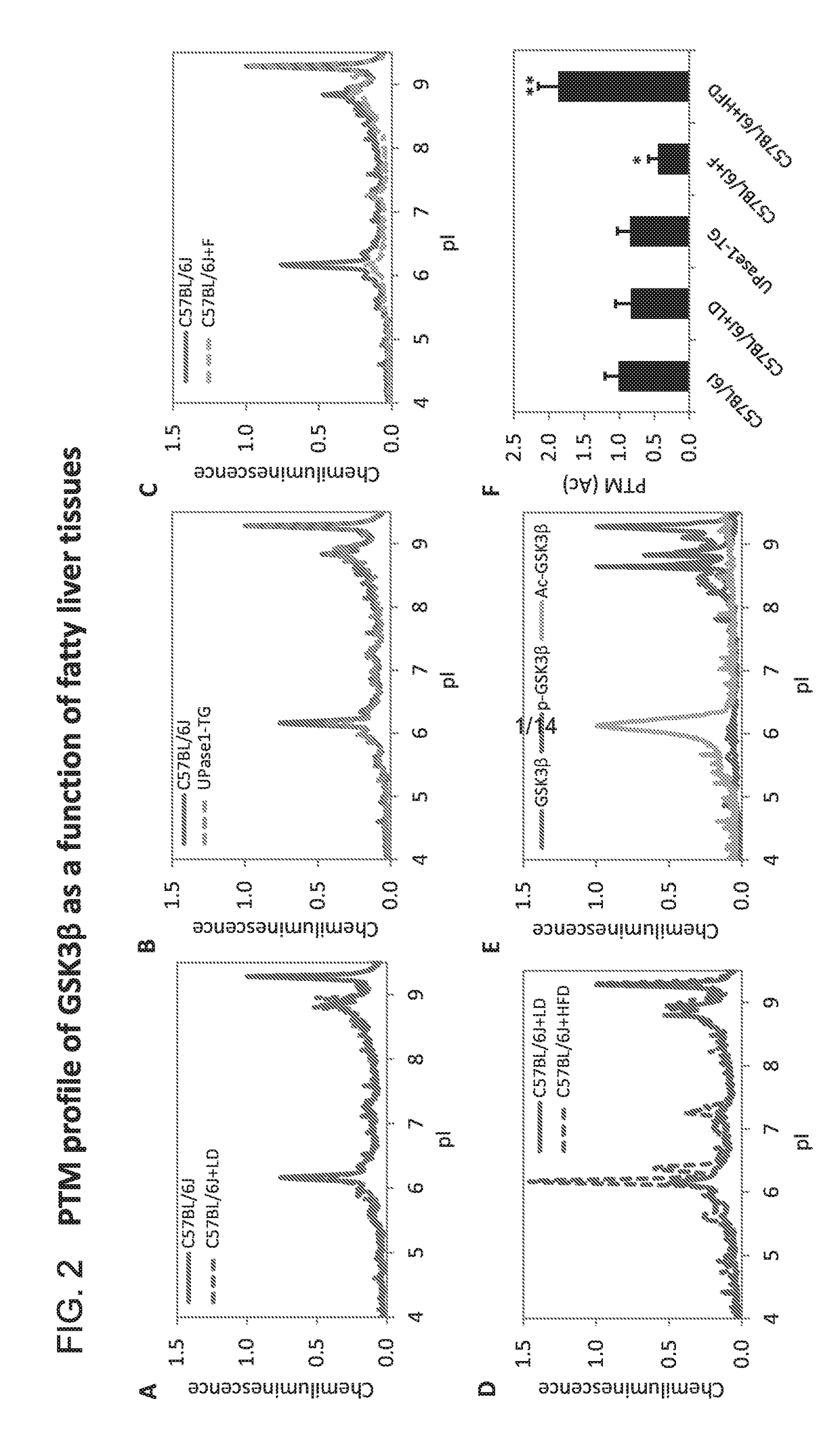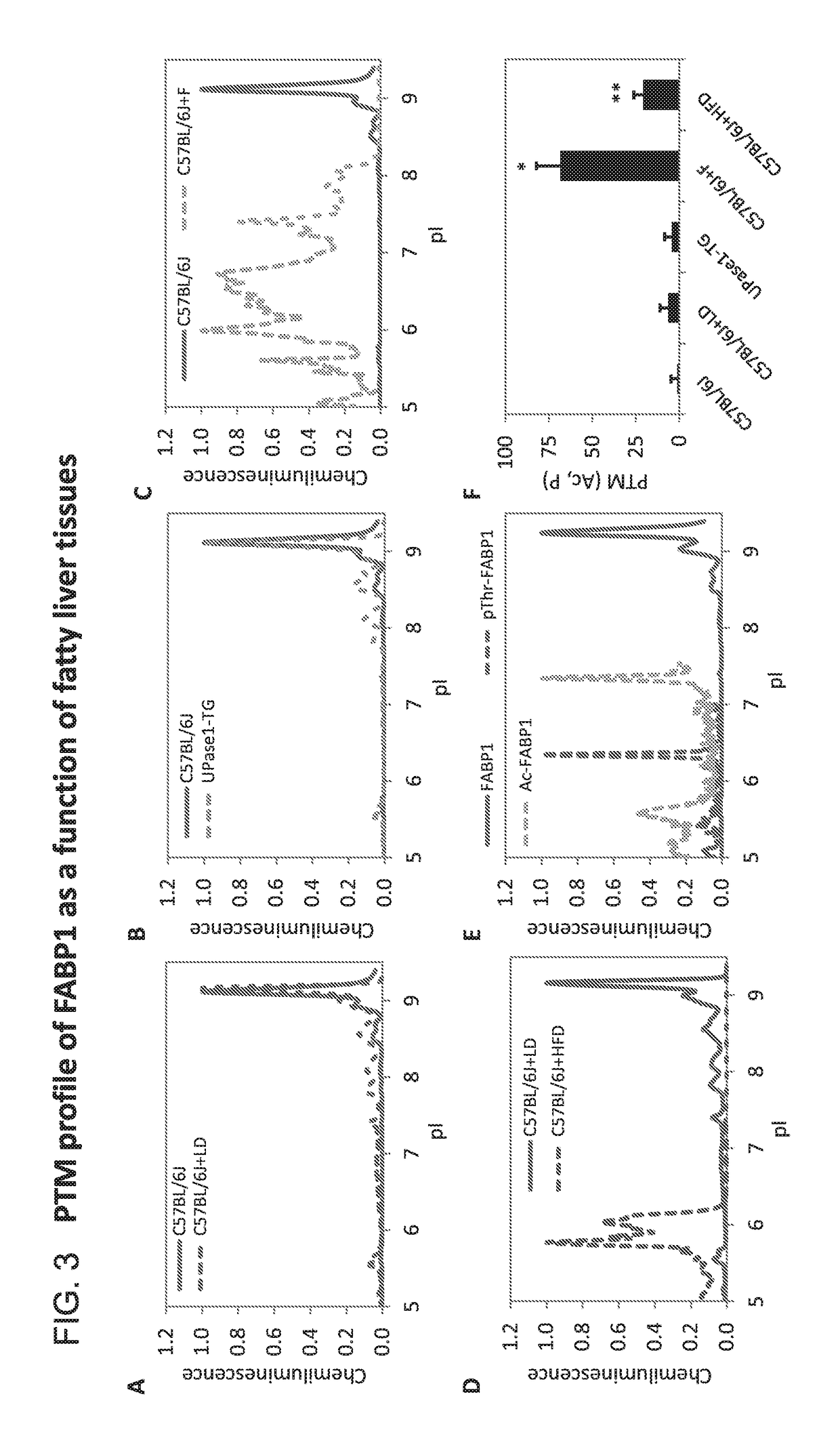Methods for molecular classification of fatty liver by high-throughput protein post-translational modifications
a high-throughput protein and fatty liver technology, applied in the field of molecular classification of fatty liver by post-translational modification detection, can solve the problems of complex pathogenesis, increased risk of dyslipidemia, type 2 diabetes mellitus, etc., and achieves the effect of improving the -oxidation rate of fatty acid
- Summary
- Abstract
- Description
- Claims
- Application Information
AI Technical Summary
Benefits of technology
Problems solved by technology
Method used
Image
Examples
example 1
[0052]Mouse models with fatty liver induced by different causes were employed, such as ageing, genetic mutation, acute drug administration, and high-fat diet (Table 1). Young C57BL / 6 J mice of approximately 3 months old served as a control. Mouse models of hepatic microvesicular steatosis were represented by C57BL / 6 J mice at approximately 6 months old (ageing, C57BL / 6 J+LD), C57BL / 6 J mice with transgenic overexpression of uridine phosphorylase 1 (genetic mutation, UPase1-TG), and C57BL / 6 J mice fed a fenofibrate-supplemented diet (drug-induced, C57BL / 6 J+F) (FIG. 1). On the other hand, a mouse model of hepatic macrovesicular steatosis was represented by C57BL / 6 mice fed a high-fat diet for 4 months (high-fat diet, C57BL / 6 J+HFD). Classification of hepatic steatosis was performed according to standard histopathology guidelines, using both Oil Red O histology and coherent anti-Stokes Raman scattering (CARS) microscopy as described previously [35]. Hepatic steatosis in all liver tiss...
example 2
[0059]Treatment of HepG2 Cells with PUGNAc.
[0060]HepG2 cells were maintained in DMEM media with 25 mM glucose and 10% fetal calf serum. HepG2 cells were treated for 48 hours with 100 μM PUGNAc (Cat. No. A7229, Sigma, St. Louis, Mo.). Total HepG2 cell extracts were collected and evaluated with 1D Western blots using antibodies against O-GlcNAc.
[0061]Treatment of HepG2 Cells with Glucosamine
[0062]HepG2 cells were transiently transfected with an expression vector that expressed FOXO1 with a Myc-DDK tag (Cat. No. RC200477, Origene, Rockville, Md.). Transfection reagent was purchased from Life Technologies (Lipofectamine 2000, Cat. No. 11668-019, Grand Island, N.Y. 14702). HepG2 cells were treated for 48 hours with 500 μM glucosamine Total HepG2 cell extracts were collected and evaluated with 1D and 2D Western blots using antibodies against FLAG tag.
[0063]Preparation of HepG2 Total Cell Extracts.
[0064]HepG2 cells were first lysed with M-Per lysis buffer (Pierce, Rockford, Ill., USA) in t...
PUM
| Property | Measurement | Unit |
|---|---|---|
| Fraction | aaaaa | aaaaa |
| Power | aaaaa | aaaaa |
| Power | aaaaa | aaaaa |
Abstract
Description
Claims
Application Information
 Login to View More
Login to View More - R&D
- Intellectual Property
- Life Sciences
- Materials
- Tech Scout
- Unparalleled Data Quality
- Higher Quality Content
- 60% Fewer Hallucinations
Browse by: Latest US Patents, China's latest patents, Technical Efficacy Thesaurus, Application Domain, Technology Topic, Popular Technical Reports.
© 2025 PatSnap. All rights reserved.Legal|Privacy policy|Modern Slavery Act Transparency Statement|Sitemap|About US| Contact US: help@patsnap.com



